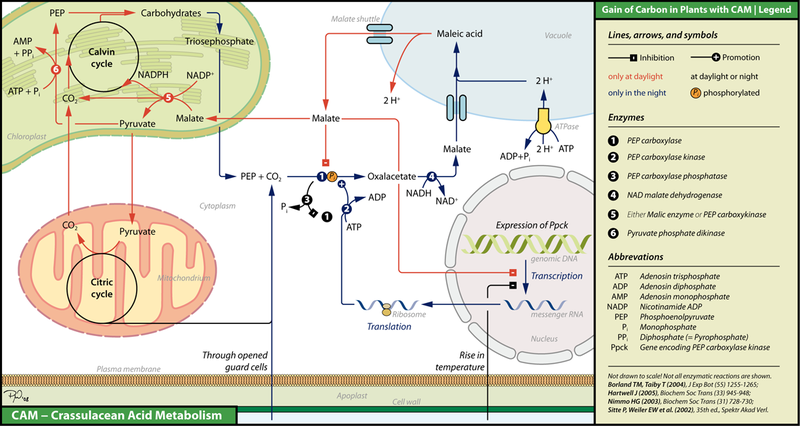Adaptation
What is Crassulacean acid metabolism?
Crassulacean acid
metabolism sound like a very complicated term, but
it is really just an adaptation for photosynthesis
in arid conditions in order to conserve water
supply. This adaptation allows Lophophora
willamsii to live in an environments that would
otherwise be impossible. It is also commonly
referred to as simply CAM, which seems a little less
intimidating. It is considered to be a two-step
process with specific events occurring during the
day and at night. During the night process, the
stoma of the cactus are open and takes up Carbon
dioxide and incorporates it into a variety of
organic acids at night. During the day, the stoma
remain closed and CO2 is released from organic
acids. These are to be used in the Calvin Cycle so
that photosynthesis may occur.
Another plants that has this same adaption is
Aloe Vera.
To learn how this species increases its population, continue to the reproduction page. If that does not interest you, return to the homepage and scout this site on your own.
